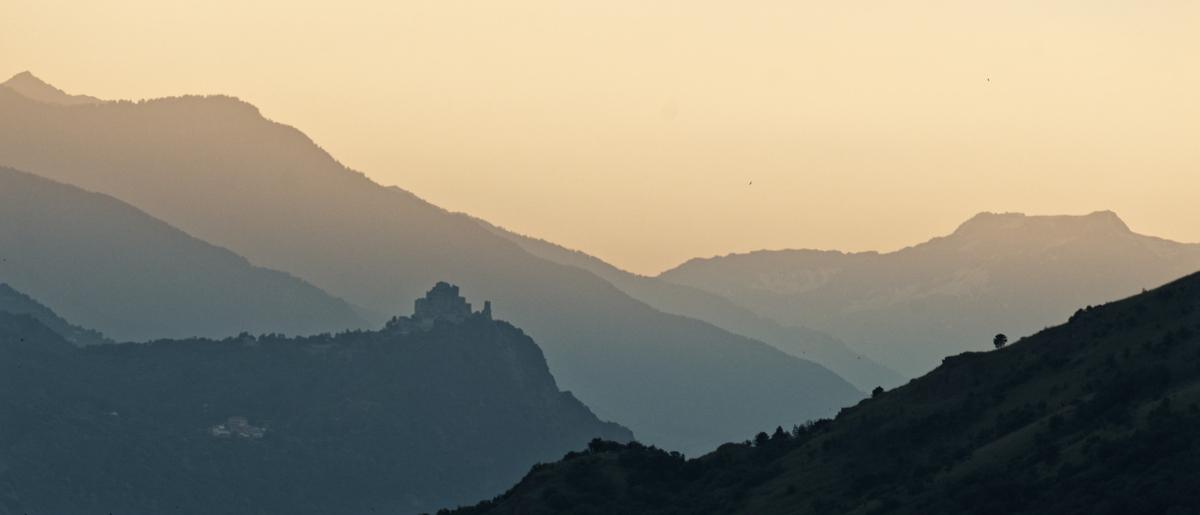I live now in a small "city"... 2200 inhabitants living in 4 different separated places or bourghs :-D
It's outside Turin, the first town at the entrance of the Susa Valley, just on the starting slopes of Mount Musiné.
It's the right Pillars at the valley entrance.
§ Here, the left pillar with the "Sacra di San Michele" abbey, where the Savoy Kings are buried. On the RIGHT > my "Solitaire" friend on the Musiné slope. In the back, the Moncenis pass toward France.
Susa Valley dreaming in the sunset

...and, yes! on both sides there is a castle!
The old bourg is centered on the church.... from the church side, a steep stair goes up 150mt to the castle.

The old road passing through the center and coming down from the castle hasn't changed much, even if they have rebuilt many of the old houses.
Roma street for you!!

A new road was built at the beginning of the '900 replacing a horse/mule path. It climbs from outside the center, 40mt from my house, and goes up to the top of the hill. Then passing down and in front of the castle, joining the old road that was going to the other villages at the back of the mountainside.
On the junction in front of the castle entrance, a brand new modern square was set 50 years ago with a cascade fountain in the farthest part. The fountain had been working for only a few years after its start. 5years ago it was dismissed. The lower part is now a stand for events.
§ Here, the lower and the higher part of the fountain 😇
That's my point of view

... and ... about the castle ??
Of course!!
Let me show you the Mount Musiné & Caselette & its Castle !!! ... in its Full Glory 3/4 of the town, 'cause the other 1/4 is on the back of the hill!

Castle Counts Cays

(don't forget to put a crow... )

OK, I give you more crows

Well, yes... we have as well ... some very unusual clouds being at a valley start 🙄














































